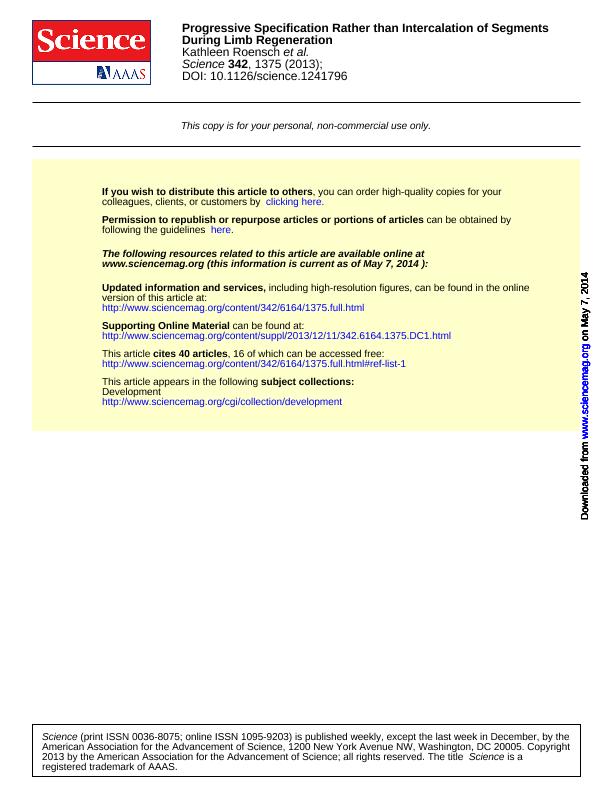Artículo
Progressive specification rather than intercalation of segments during limb regeneration
Fecha de publicación:
12/2013
Editorial:
American Association for the Advancement of Science
Revista:
Science
ISSN:
0036-8075
Idioma:
Inglés
Tipo de recurso:
Artículo publicado
Clasificación temática:
Resumen
An amputated salamander limb regenerates the correct number of segments. Models explaining limb regeneration were largely distinct from those for limb development, despite the presence of common patterning molecules. Intercalation has been an important concept to explain salamander limb regeneration, but clear evidence supporting or refuting this model was lacking. In the intercalation model, the first blastema cells acquire fingertip identity, creating a gap in positional identity that triggers regeneration of the intervening region from the stump. We used HOXA protein analysis and transplantation assays to show that axolotl limb blastema cells acquire positional identity in a proximal-to-distal sequence. Therefore, intercalation is not the primary mechanism for segment formation during limb regeneration in this animal. Patterning in development and regeneration uses similar mechanisms.
Palabras clave:
Regeneration
,
Intercalation
,
Axolotl
,
Progresive Specification
Archivos asociados
Licencia
Identificadores
Colecciones
Articulos(IFLYSIB)
Articulos de INST.FISICA DE LIQUIDOS Y SIST.BIOLOGICOS (I)
Articulos de INST.FISICA DE LIQUIDOS Y SIST.BIOLOGICOS (I)
Citación
Roensch, Kathleen; Tazaky, Akira; Chara, Osvaldo; Tanaka, Elly M.; Progressive specification rather than intercalation of segments during limb regeneration; American Association for the Advancement of Science; Science; 342; 6164; 12-2013; 1375-1379
Compartir
Altmétricas




